A Visual Guide to Viral Rashes
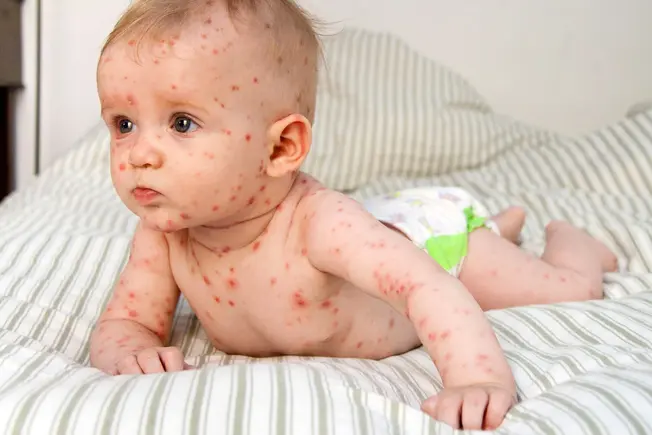
Chickenpox
Everyone knows about this viral rash. Or they used to. A new vaccine means few kids get chickenpox anymore. You might have a fever or sore throat before the telltale itchy spots break out all over your body. It’s very contagious, so it’s best to stay home until all the sores crust over. Never give aspirin to a child with chickenpox. It can cause Reye's syndrome, which is rare but serious.
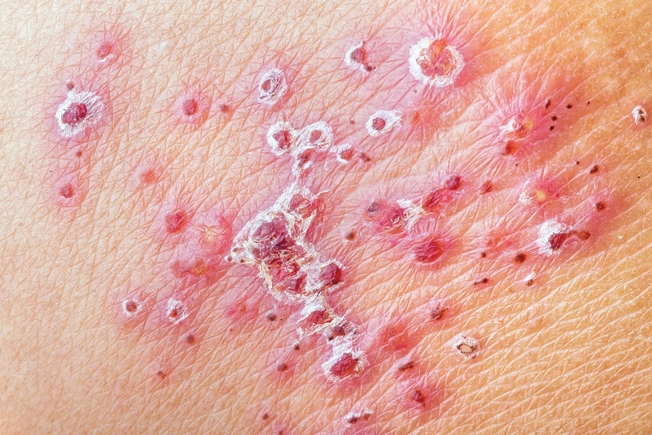
Shingles
Once you’ve had chickenpox, the virus lives on inside your body. Later it may come back as shingles, a painful, blistering rash. It’s more likely as you get older. The virus is embedded in the blisters. Contact with the virus can’t give you shingles directly, but it could give you chickenpox if you’ve never had it. A shingles vaccine might help prevent an outbreak.
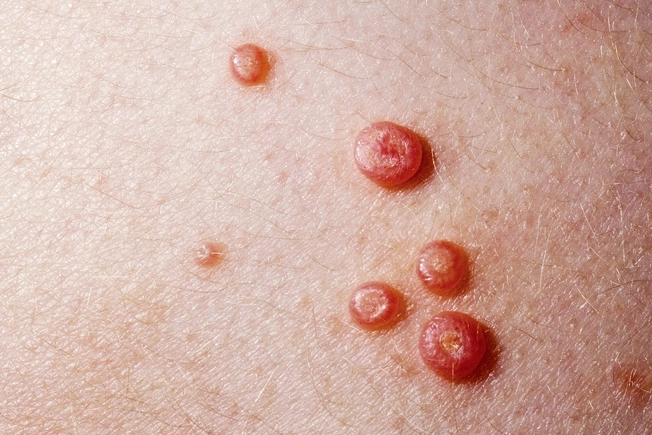
Molluscum Contagiosum
Look for about 15 pinkish-red bumps with a dimple in the middle and white gunk inside. Scratch them and you may spread the virus to other places on your body. You also could get it from someone’s skin. Wrestlers and gymnasts pick it up from used gym towels and sweaty mats. It may go away on its own, or your doctor might suggest topical cantharidiner or “freezing” the bumps with liquid nitrogen to get rid of them.
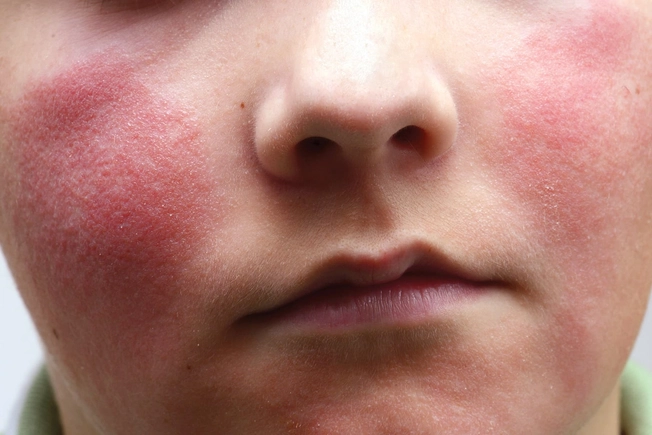
Fifth Disease
Also called erythema infectiosum, it’s more common in kids. You get a splotchy red rash on the face that looks like a slapped cheek. You also might have a fever and body aches. A web-like rash could sprout on your arms, legs, and body parts that gets worse in the sun. You can catch it from droplets in the breath of an infected person. It usually goes away on its own in 5-10 days, but the rash could come back for a few weeks afterward.
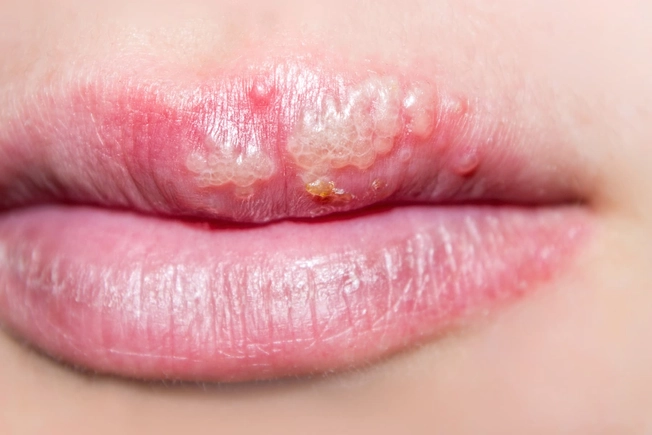
Cold Sores
You might not like the look of these itchy, painful sores on your mouth and lips. They come from a virus (HSV-1) that most people get as children from the spit of an infected person. The sores usually get better on their own, but your doctor may suggest antiviral pills or creams to help speed the healing. The virus stays in your body and could cause outbreaks when you are sick, anxious, or overtired.
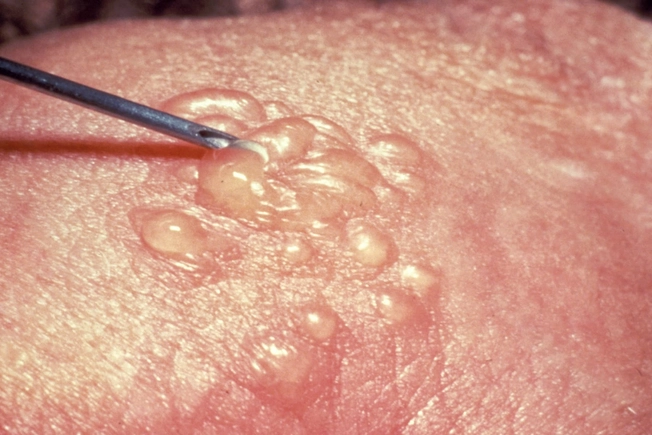
Genital Herpes
You can get it from sexual intercourse or from oral sex. Your genitals might tingle, itch, or burn before painful, blistering sores develop. These last 7-10 days before they crust over. The virus stays in your body even when you have no symptoms. Your doctor can prescribe drugs to limit or control outbreaks. Use a condom to lessen the chance you’ll get or pass on the virus.
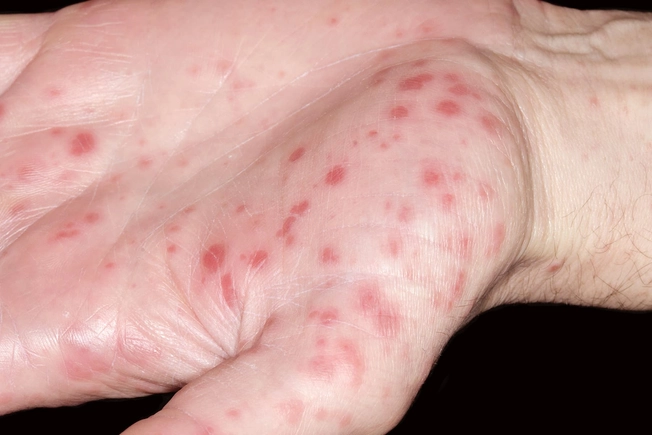
Hand-Foot-and-Mouth Disease
Like the name says, you get a painful but not itchy rash on the bottom of your hands and feet and on the buttocks that may blister. You may have sores inside your mouth. Kids under age 10 get it most, often from an infected person’s pee, poop, snot, or spit. After that, most people build resistance. It usually clears on its own in 7-10 days.
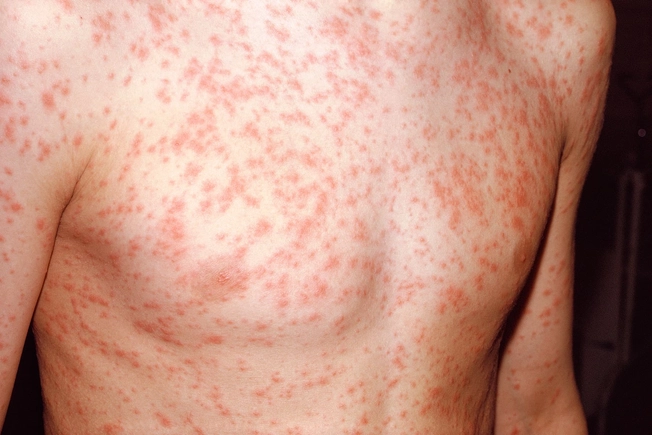
Rubella
If you’re not up to date on your vaccinations, this virus could cause a fine, pink rash that starts on your face and spreads to your body, arms, and legs. It disappears in the same order. You may also feel a bit sick and have a headache. You can get it from an infected person when they cough or sneeze near you.
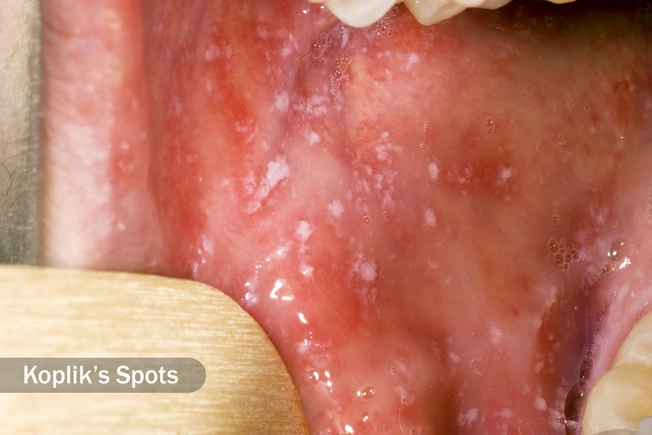
Measles
Vaccines make this a rare disease in the U.S. But measles still kills more than 100,000 people worldwide, most under the age of 5. You might have a dry cough, sore throat, runny nose, and fever. Splotches of flat rashes flow into each other. One telltale sign is tiny white spots with bluish-white centers inside your mouth or cheek called Koplik’s spots. Call your doctor right away if you think someone has measles.
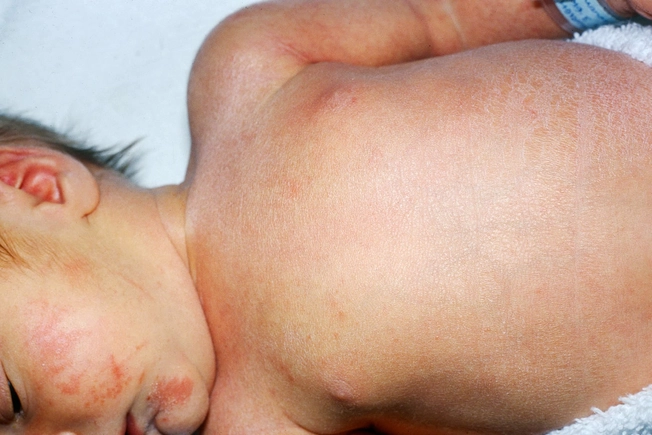
Roseola (Sixth Disease)
It usually infects kids between 6 months and 2 years old. It often starts with several days of sore throat, runny nose or cough, and a high fever. A rash of reddish flat or raised spots often follows. It starts on the trunk and spreads all over. The spots turn white when you touch them and could have little circles or “halos.” Call your doctor if the fever is over 103 F or the rash doesn’t improve in 3 days.
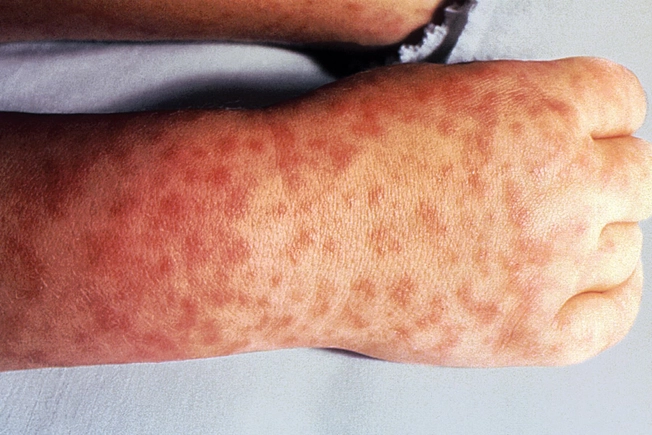
Colorado Tick Fever
You can pick up this rare disease from bites from the Rocky Mountain wood tick. This eight-legged creature lives in the western U.S. in higher altitudes and picks up the virus as it feeds on squirrels, chipmunks, and mice. You’ll likely feel tired and achy with fever and chills. You could also have a headache, belly pain, vomiting, and a skin rash. There’s no pill for it, but in serious cases you may need hospital care to get better.

HIV Rash
HIV is a viral infection spread through sex or IV drug use. It can cause a rash that’s flat and red with tiny bumps. In some cases, the skin might be very sensitive to sunlight or chemicals like cleaning agents. If you have HIV, you might also be more likely to get other conditions that cause rashes, like genital herpes, cold sores, Kaposi's sarcoma lesions, and molluscum.
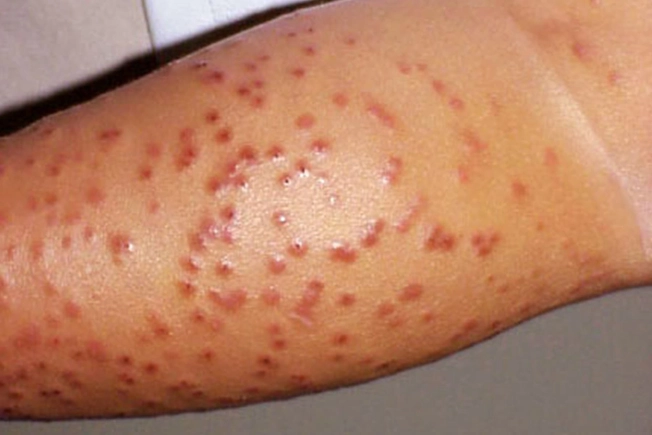
Acrodermatitis (Gianotti-Crosti Syndrome)
Kids between 9 months and 9 years often get this bumpy rash. It breaks out on the arms, legs, and bottom, sometimes with blisters. Viral infections like hepatitis B, Epstein-Barr, or cytomegalovirus can cause it. Other symptoms include runny nose, sore throat, and fever. The rash lasts from 10 days to several weeks. It usually goes away on its own, but your doctor might suggest using a steroid cream.
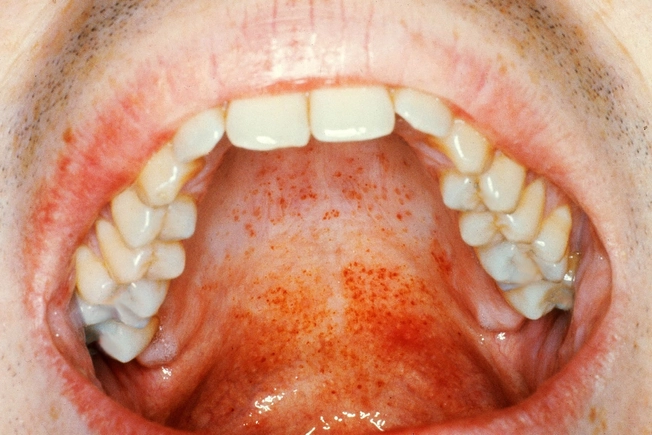
Mononucleosis
Mono, aka the “kissing disease,” spreads through saliva. You also can catch the virus from a sneeze or cough or shared food. Teenagers get it most often. If your rash comes with a fever, sore throat, or swollen lymph nodes in your neck or armpits, it could be a sign of “mono” or some other viral infection. You treat it with plenty of rest, fluids, and over-the-counter pain meds. Talk to your doctor about unusual symptoms.

Zika
Most people who get it have no symptoms. But you could have a fever, headache, joint and muscle pain, and a rash on your body and around your eyes. You get it from the bite of an aedes mosquito, found all over the world, or from an infected person’s blood or semen or other sexual fluids. There’s no specific treatment, but rest, fluids, and over-the-counter drugs can help ease your symptoms.